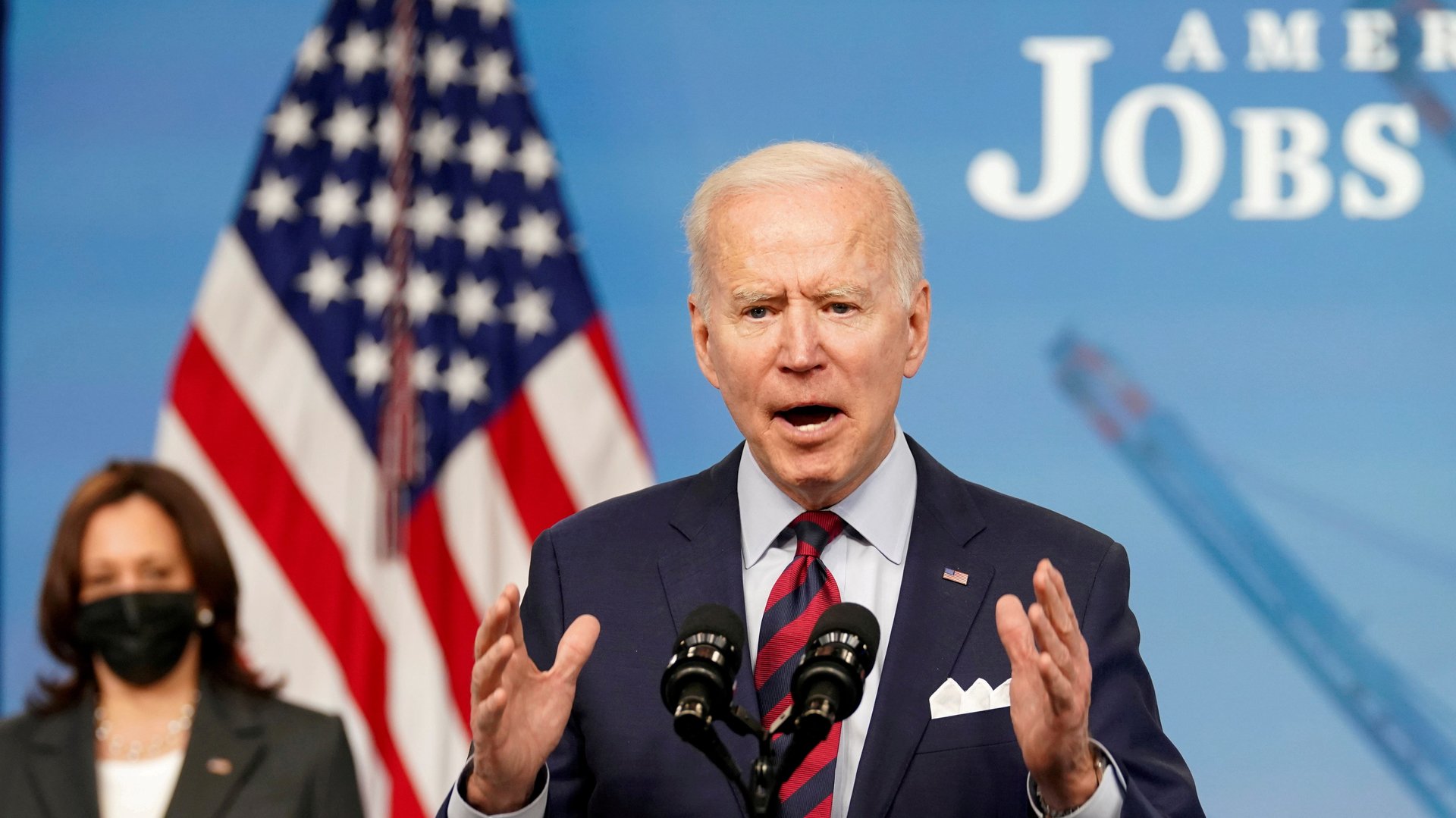How will Joe Biden’s spending plans affect inflation?
In Washington, the entire agenda of the US government, from fighting wars to fighting climate change, is held up over budget concerns.


In Washington, the entire agenda of the US government, from fighting wars to fighting climate change, is held up over budget concerns.
President Joe Biden’s plans to invest in everything from infrastructure and internet access to infant care and semiconductor innovation remain on hold as lawmakers dicker about the effects on the budget. In a tight Senate, centrist Democrats have expressed concerns that the administration’s plans could be too inflationary—or just too much spending.
The closer one looks at economic forecasts and the out-of-context price tag of $3.5 trillion that’s been thrown around in budget discussions, the less one has to fear. There may be objections to the spending program, but it’s not out of the ordinary in context of the American budget.
Is current spending driving inflation?
Consider some research fresh out of the Federal Reserve Bank of San Francisco, where economists looked at the effect of the last major spending bill, the $1.9 trillion American Rescue Plan (ARP) enacted last winter to provide relief from the pandemic recession.
Some analysts have argued that its spending, particularly stimulus checks and expanded unemployment benefits, has fueled rising prices by goosing demand beyond what the economy can sustain. The researchers, however, find the bill is likely responsible for a 0.3 percentage point increase in inflation as measured by the personal consumption expenditure index. That index currently grew at 4.3% in the 12 months before August, suggesting that without the ARP, inflation would still be higher than normal due to the pandemic and the Fed’s efforts to let the prices increase faster than usual.
“Thus, the estimated impact of the ARP on inflation is meaningful, but it is still a far cry from the strong overheating of the 1960s,” they conclude.
How will government spending change under Biden’s plans?
It’s going to go down quite a bit. It’s easy imagine that spending is set to keep rising, but that overlooks the last two years, including ARP in 2021 and the CARES Act and its follow-up in 2020. In the last two years, the federal government has spent the equivalent of more than 30% of annual production to support the US economy, compared to an average between 1962 and 2019 of 20.1%.
What are Biden’s plans? The best numbers we have right now are from the budget that his team released earlier this year, and it’s important to caveat them with the reality that they appear set to shrink. One recent estimate, from Goldman Sachs, suggests that Biden will ultimately win about $1.5 trillion less for his priorities than originally forecast. At the highest level, Biden plans to spend the equivalent of 23% of GDP next year and 22% in 2023.
How that affects the economy will also depend on what kinds of tax increases lawmakers enact alongside the spending plans. But looking at forecast deficits under Biden’s original plan, it’s clear that spending is set to fall precipitously next year, which should relieve pressure on inflation:
How do Biden’s plans compare to other wealthy countries?
Beyond the US experience, other advanced economies tend to spend significantly more as a percentage of economic production on social services and investments in their countries. In 2019, before the pandemic threw nations across the world into fiscal overdrive, overall US spending, including state and local governments, was equivalent of 38.3% of GDP, compared to more than 40% spent by most major European democracies, according to the OECD.
We don’t yet have good direct comparisons, but knowing that Biden is proposing increasing US federal spending by about 2% of GDP over 2019, we can expect the US government will spend as much as the UK, Poland, or the Netherlands do in a typical year, but not even close to the levels adopted by Australia, Sweden, Germany, or France. After 2023, US spending starts to fall back to its typical average.
All that’s to say, Biden’s agenda is robust, but it’s far from a radical change in US budget habits. Indeed, some critics think that’s exactly the problem—especially in the pared down version now expected to be enacted, it doesn’t move fast enough to fight climate change or strengthen the US economy.